12 Charming Flowers That Start with C + Growing Guide Charts

This post follows our research editorial guidelines.

Comely flowers cascade and creep, copious in cultivation and cautious around corners. Consistently charming and conspicuously cheerful, confident cultivators cater to these floral creations from carnations to cornflowers.
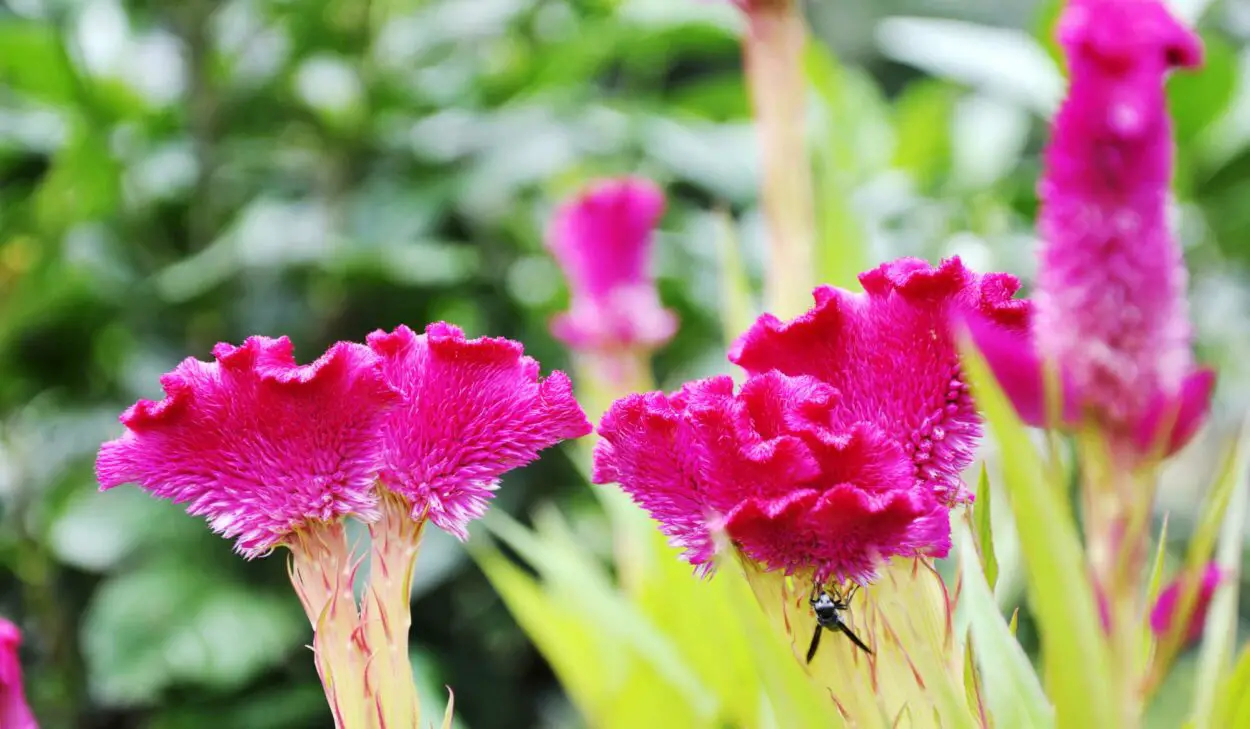
I’m creeping along the collection of my most cherished flowers, down the column in alphabetical order. Can you tell we’re on to the letter C? Let’s continue!
Quickly Find The Flowers Starting With The Letter C
1. Cardinal flower (Lobelia cardinalis)
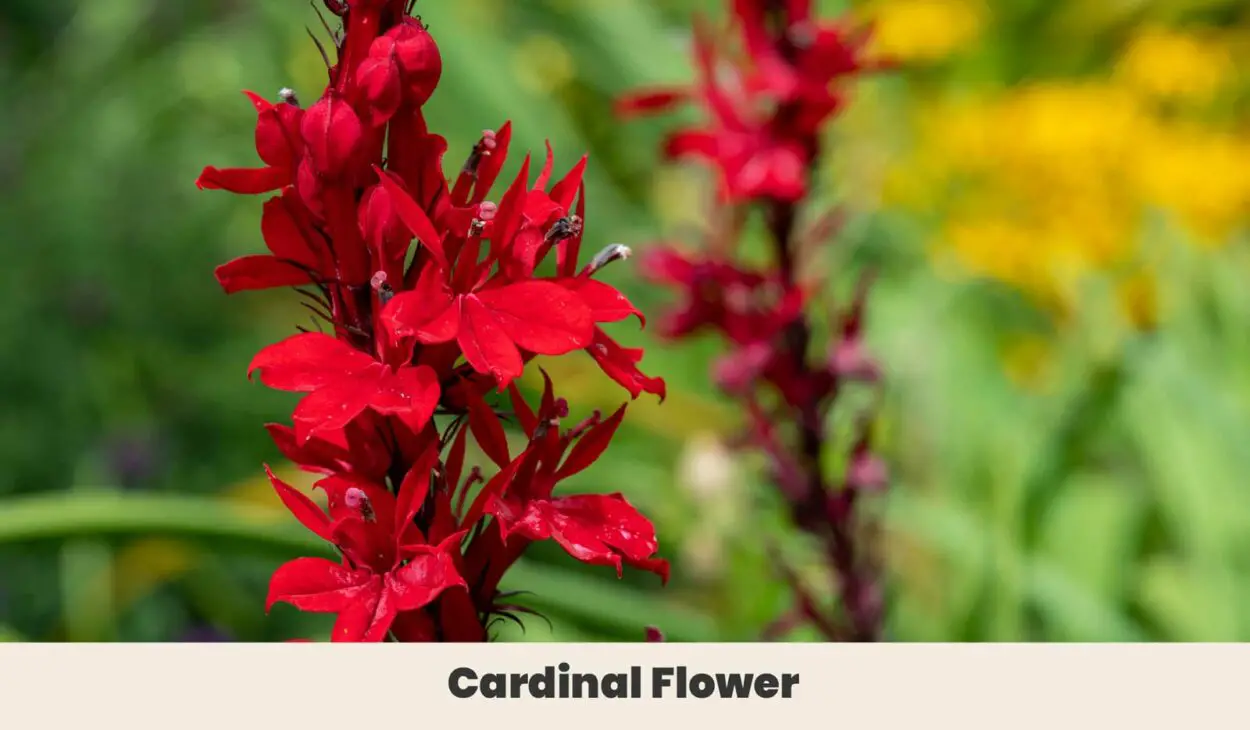
Like a line of red-robed clergymen, the tall flowering spires of the cardinal flower glow a deep, velvety red. The plant itself is only a foot or two tall, but once the summer heat arrives it quickly produces a six-foot-tall inflorescence covered in dainty red blooms.
The bright color of this red perennial is irresistible to hummingbirds but also provides nectar to other useful garden visitors like butterflies and bees.
| Botanical Name: | Lobelia cardinalis |
| Growth Rate: | Fast |
| Native Range: | Eastern United States |
| Hardiness Zones: | 3a to 9b |
| Soil Needs: | Organically rich, moist to wet soils. Does poorly in sand or rocky soils |
| Exposure: | Full sun to full shade |
| Blooming Period: | Summer to fall |
2. Carnation (Dianthus caryophyllus)

Classic carnations are surprisingly easy to grow at home, a fantastic choice for sunny corners of the garden looking for season-long blooms. Their popularity as a cut flower means there’s a color and cultivar for just about any taste – I’m personally partial to ruffly bi-colored carnations.
They do well in sandy soils with lots of organic material added to retain moisture and keep their heat-sensitive roots nice and cool.
| Botanical Name: | Dianthus caryophyllus |
| Growth Rate: | Moderate |
| Native Range: | Mediterranean |
| Hardiness Zones: | 7 to 10 |
| Soil Needs: | Moist, organically rich sandy or rocky soil. |
| Exposure: | Full sun to partial shade |
| Blooming Period: | Summer |
| Water needs: | Moderate |
3. Chocolate Daisy (Berlandiera lyrata)
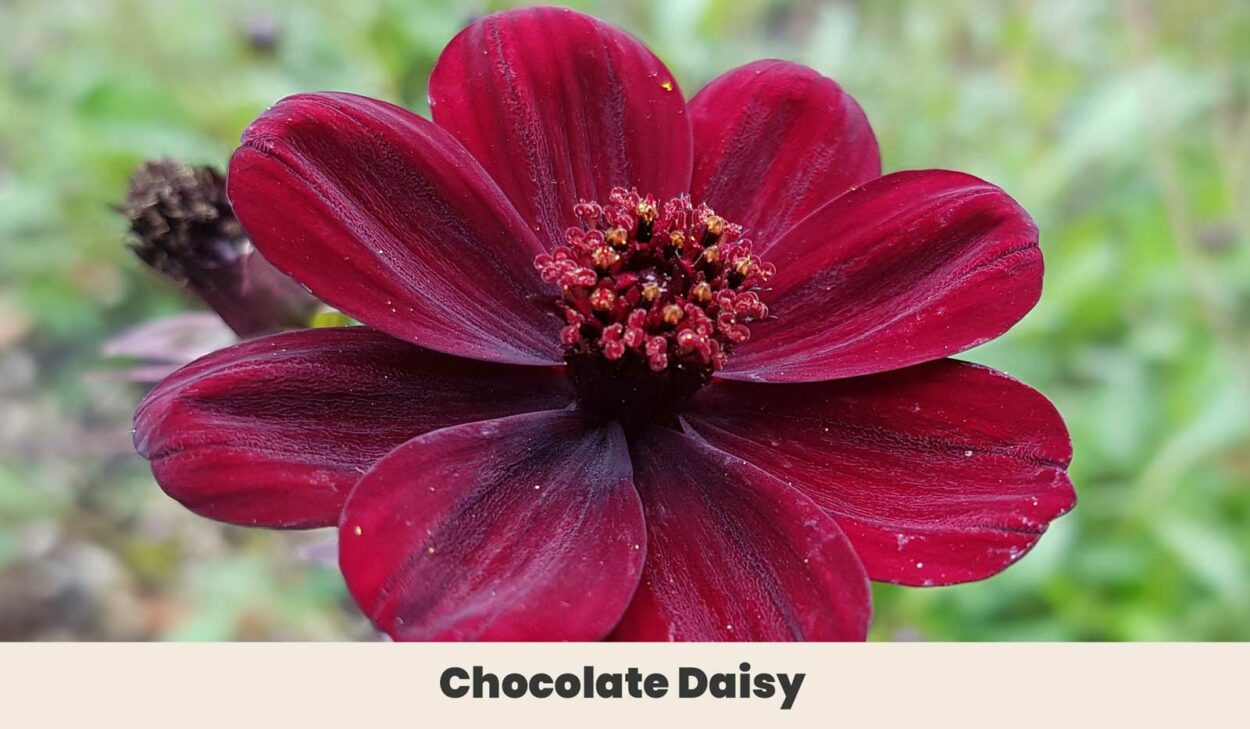
Also charmingly known as lyre leaf green eyes, the chocolate daisy is a common sight along roadsides and grasslands across the southwest. They’re sweetly scented night-blooming wildflowers, calling out to moths and small bats as well as more common pollinators like bees. It’s a rich and chocolatey fragrance that carries well into the early or mid-morning.
| Botanical Name: | Berlandiera lyrata |
| Growth Rate: | Fast |
| Native Range: | Southern United States and Mexico |
| Hardiness Zones: | 4 to 10 |
| Soil Needs: | Most types of drainage needs are met |
| Exposure: | Full sun |
| Blooming Period: | Spring to fall; all year in warm regions |
4. Candytuft (Iberis sempervirens)
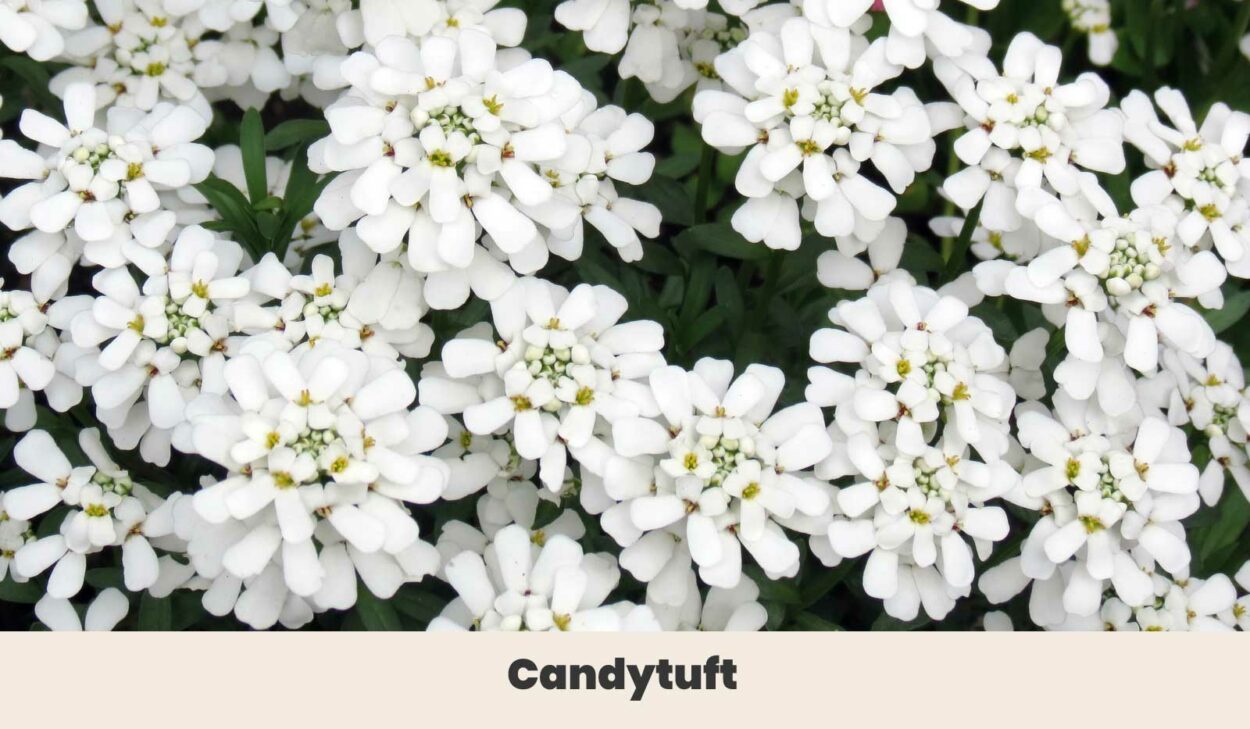
Candytuft is a sprawling ground cover known for abundant snowy white flowers. It’s low growing, with creeping tendrils and often blooms so thickly it’s common for the leaves to be totally obscured behind its cascading blossoms.
This sweet delight does well as a border plant, but really shines in hanging baskets or containers that allow its cascading floral displays to center stage.
| Botanical Name: | Iberis sempervirens |
| Growth Rate: | Fast |
| Native Range: | Spain and Portugal |
| Hardiness Zones: | 3 to 8 |
| Soil Needs: | Will tolerate most soils if drainage needs are met |
| Exposure: | Full sun |
| Blooming Period: | Spring |
5. Coneflower (Echinacea purpurea)

Coneflowers produce a rainbow of tall, nodding wildflowers, with bright petals ranging from white and yellow to purple, gold, and scarlet. They’re a hardy flower that takes well to most conditions, producing long-lasting flowers from mid-summer right into fall.
They’re a great food source for native wildlife, even feeding vulnerable bird life as the flowers go to seed. They’re great for people, too as all parts of the plant can be used for a health-boosting tea.
| Botanical Name: | Echinacea purpurea |
| Growth Rate: | Fast |
| Native Range: | Eastern and central United States |
| Hardiness Zones: | 3 to 8 |
| Soil Needs: | Will tolerate most soils |
| Exposure: | Eastern and Central United States |
| Blooming Period: | Summer to fall |
6. Cuckoo Flower (Cardamine pratensis)
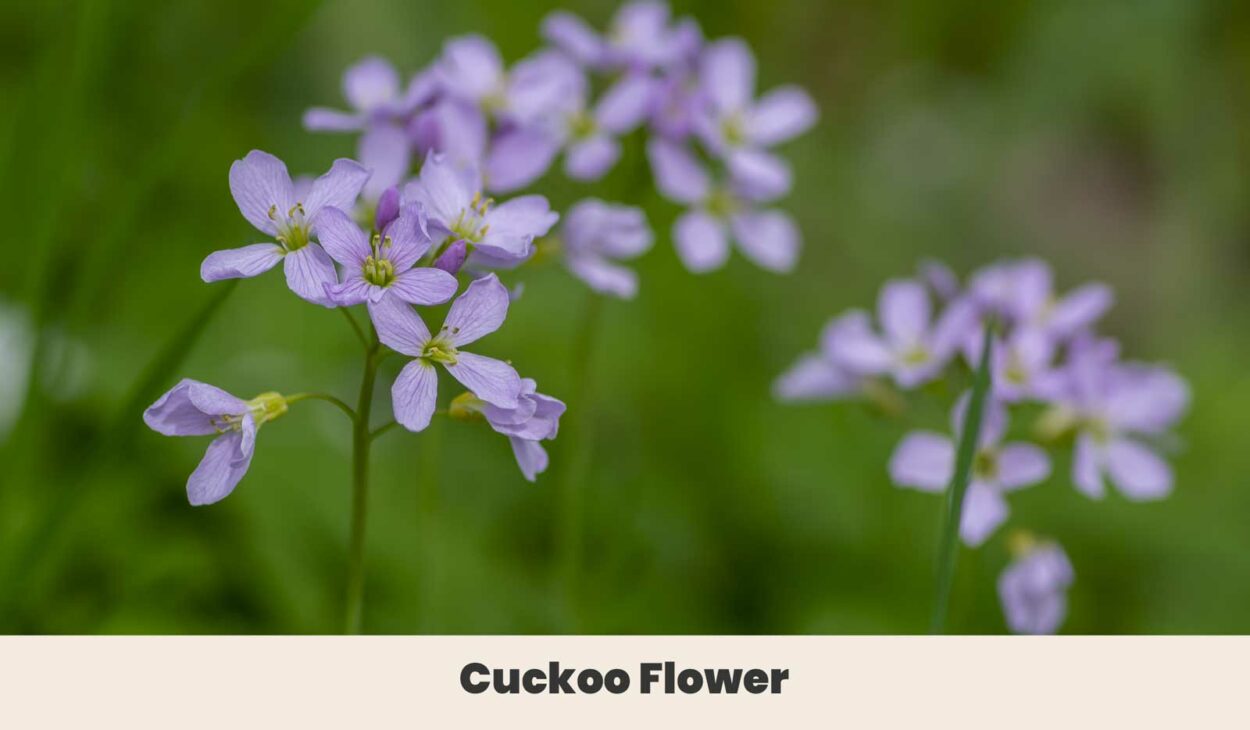
When the cuckoos start to call in the early spring the cuckoo flower raises its blooms in answer. These delicate pale flowers thrive in shady, moist corners of the garden, drawing butterflies to every corner. The blossoms range from white to pink and cream with a delicate fragrance. It’s a type of cress, and young leaves are great in salads.
| Botanical Name: | Cardamine pratensis |
| Growth Rate: | Slow |
| Native Range: | Europe |
| Hardiness Zones: | 3 to 7 |
| Soil Needs: | Part of full shade |
| Exposure: | Part shade to full shade |
| Ease of Care: | Easy |
| Diseases: | Some risk of mildews or rust |
| Blooming Period: | Spring |
7. Crocus (Crocus sativus)
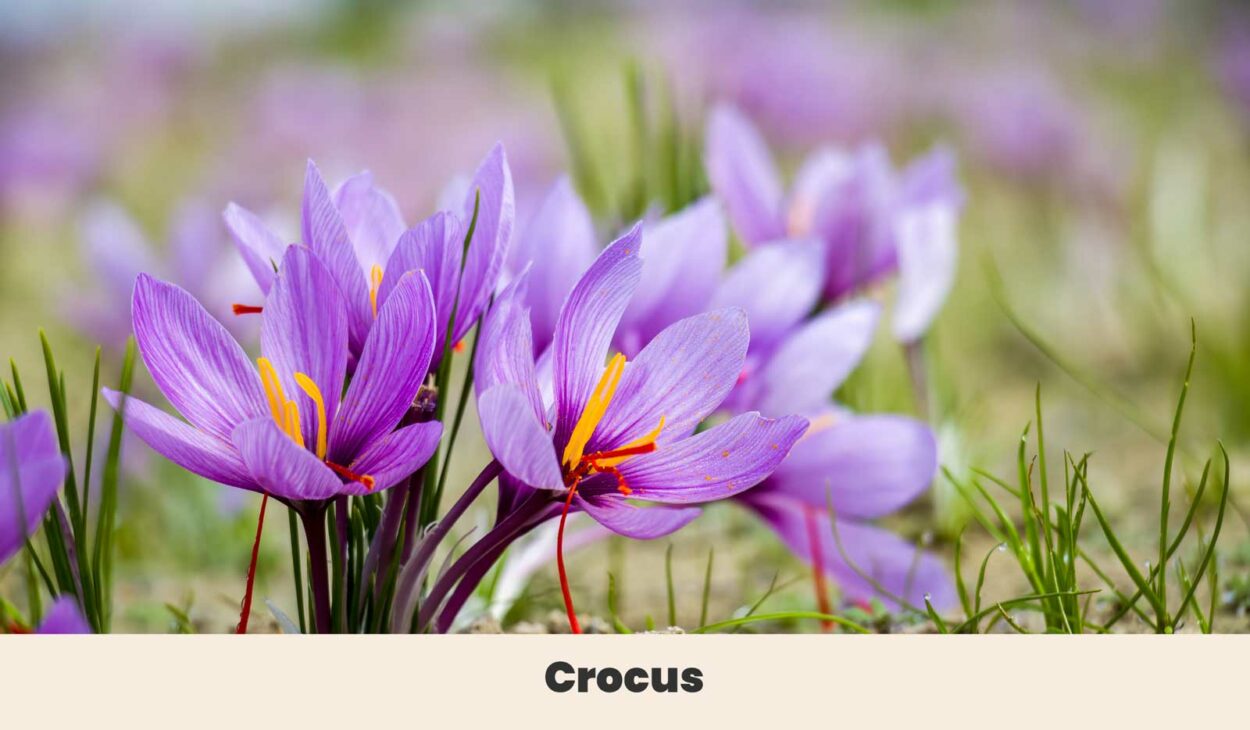
Fall-blooming crocus flowers bring a much-welcome pop of purple to the garden as the seasons turn. They are valued for both their elegant blooms and the golden bounty they contain. The spice saffron is worth more than its weight in gold and is exclusively found in the heart of crocus flowers. You’ll need a lot to flavor your food, but thankfully they are just as treasured as a garden feature.
| Botanical Name: | Crocus sativus |
| Growth Rate: | Moderate |
| Native Range: | Mainland Greece |
| Hardiness Zones: | 5a to 8b |
| Soil Needs: | Moist, organically rich sand or loam |
| Exposure: | Full sun |
| Blooming Period: | Fall |
8. California Poppy (Eschscholzia California)

The buttery yellow flowers of the California poppy are easy to grow and just as easy to love. They thrive in poor-quality soils and can turn a sandy patch of barren land into a paradise of green and gold, a welcoming sight for native butterflies, bees and bird life. As a wildflower the California poppy is known for its rich golden color, newer domesticated cultivars flower in pinks and reds, too.
| Botanical Name: | Eschscholzia california |
| Growth Rate: | Fast |
| Native Range: | Western United States |
| Hardiness Zones: | 6 to 10 |
| Soil Needs: | All types of provided drainage is good |
| Exposure: | Full sun |
| Blooming Period: | Year-round in warm conditions |
9. Chrysanthemum (Chrysanthemum indicum)
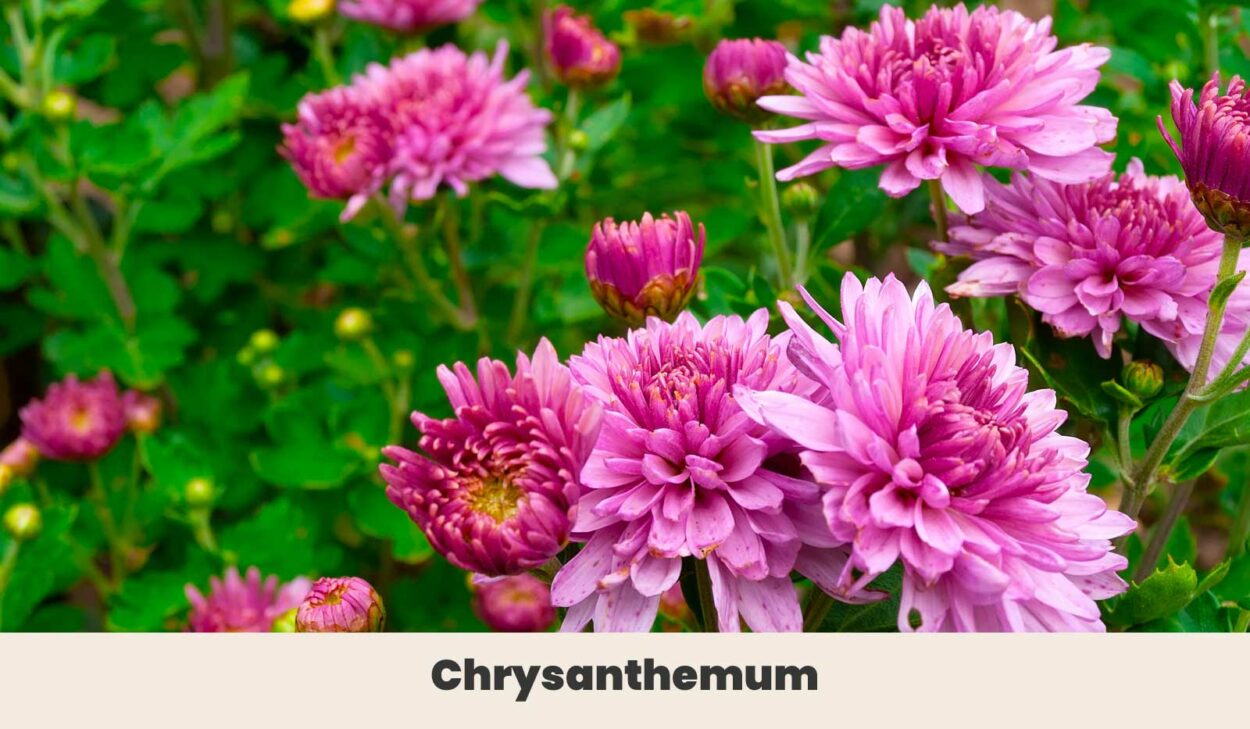
A hardy shrub with sweet golden flowers, botanists suspect this form of chrysanthemum may be the parent species from which other domestic varieties were cultivated.
It’s tough as nails, and easily grown in just about any soil type when provided with enough sun. It’s treasured in traditional Chinese medicine, where teas and tinctures made from its flowers treat everything from eye ailments to stomach problems and scrofula. Mum’s are one of the most common sights among fall-planted gardens in my area, how about yours?
| Botanical Name: | Chrysanthemum indicum |
| Growth Rate: | Fast |
| Native Range: | Eastern Asia |
| Hardiness Zones: | 5 to 9 |
| Soil Needs: | Tolerates all soil types if drainage needs are met |
| Exposure: | Full sun |
| Blooming Period: | Late summer |
10. Cosmos (Cosmos bipinnatus)
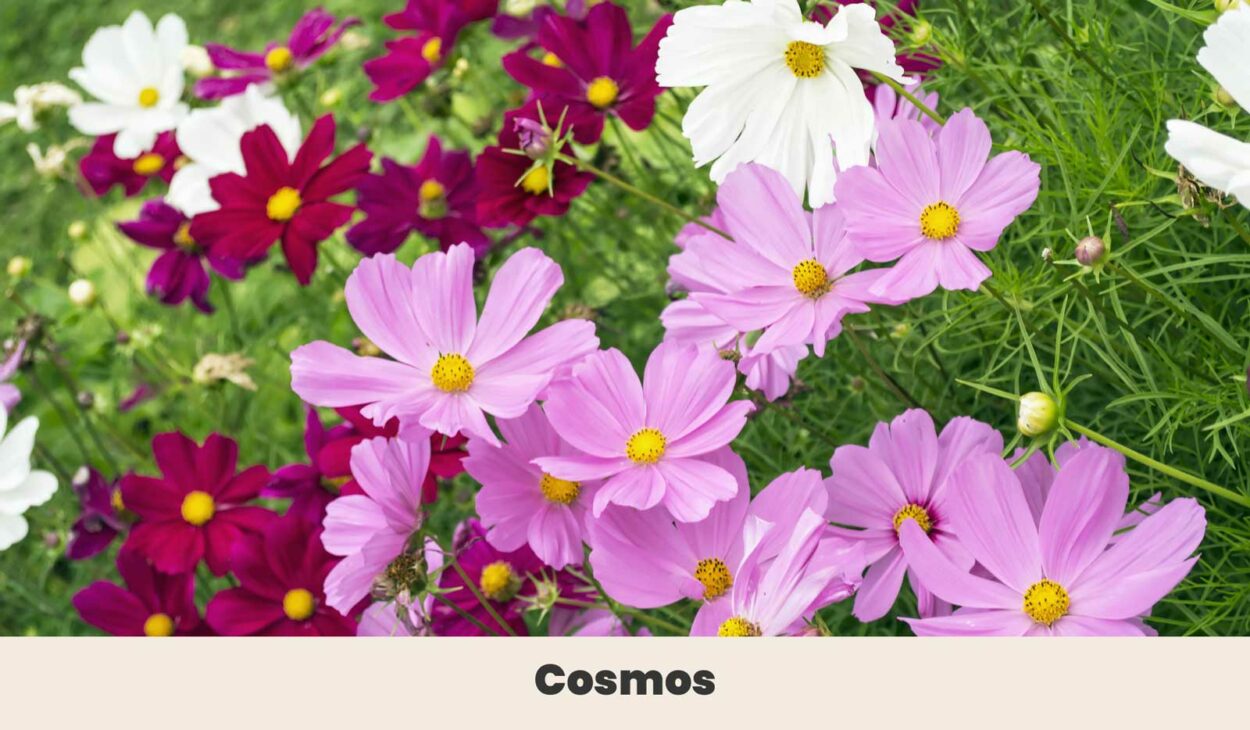
Cosmos are classic wildflowers, with wide cheerful blooms in shades of pink, purple, and white. Their long-lasting flowers are simple, with many petals ringing a bright yellow heart. It’s hard to go past them for beginner gardeners, as they are almost ridiculously easy to grow. All they need is a bit of warm and sunlight and they will flower abundantly all through the summer.
| Botanical Name: | Cosmos bipinnatus |
| Growth Rate: | Fast |
| Native Range: | Mexico and the southwestern United States |
| Hardiness Zones: | 2a to 11b |
| Soil Needs: | Tolerates most soil types |
| Exposure: | Full sun to partial shade |
| Blooming Period: | Spring to fall |
11. Canadian Goldenrod (Solidago canadensis)

Canadian Goldenrod is a stunningly tall yellow flower, with tall luxurious racemes six feet tall and radiantly yellow. The individual flowers are small but clustered together in dense profusion.
They’re native to the United States and can be found in prairies and roadsides across the country. They’re a vital late-season food plant for pollinators as they provide rich quantities of pollen and nectar.
| Botanical Name: | Solidago canadensis |
| Growth Rate: | Moderate |
| Native Range: | Southern Canada and North America |
| Hardiness Zones: | 3 to 9 |
| Soil Needs: | Loamy or clay soils with good moisture retention |
| Exposure: | Full sun |
| Blooming Period: | Summer to fall |
12. Coral Bells (Heuchera spp.)
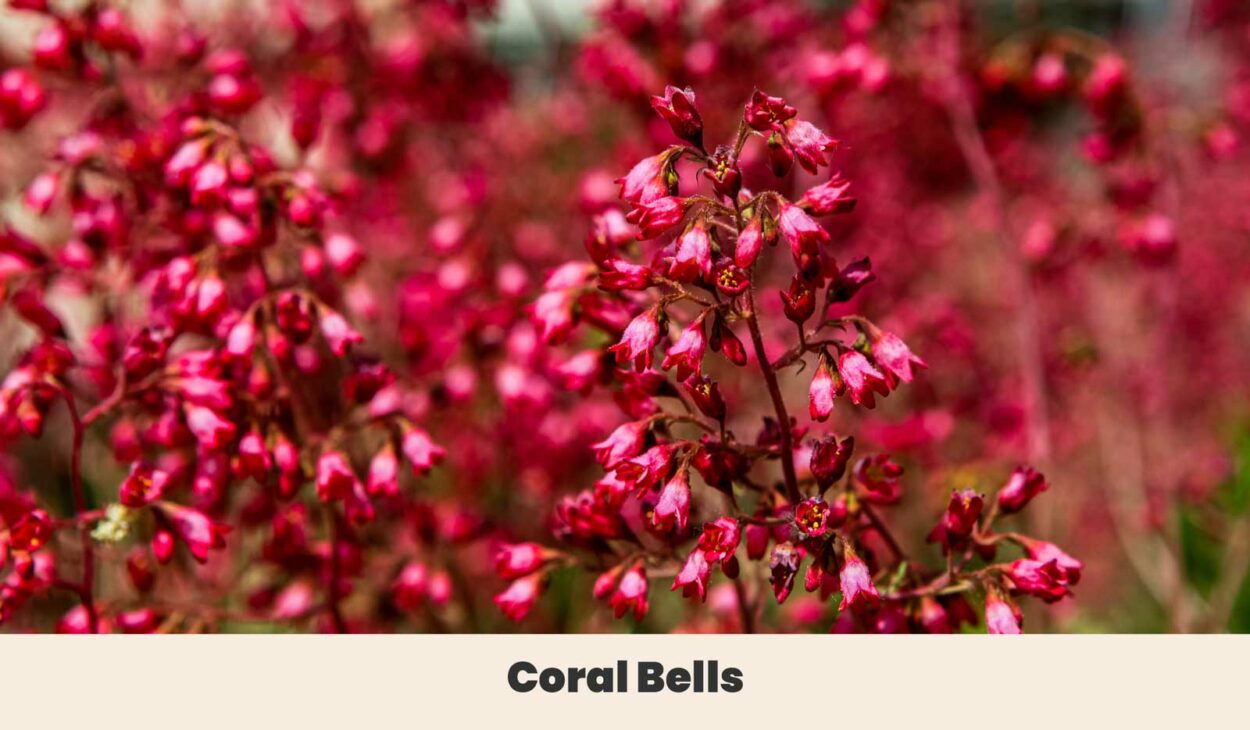
For year-round color, coral bells provide both charming flowers and colorful, season-long captivating foliage. The flowers are delicate bell-shaped blooms in shades of pink, red, and white, but it’s the leaves that are truly awe-inspiring. They range from green to purple and pink, burgundy, and rich chocolate brows. No matter the time of year, coral bells delight.
| Botanical Name: | Heuchera spp. |
| Growth Rate: | Moderate |
| Native Range: | Russia, Eastern Asia and North America |
| Hardiness Zones: | 3 to 9 |
| Soil Needs: | Moist, organically rich loams |
| Exposure: | Full sun to partial shade |
| Blooming Period: | Spring to fall |
Final thoughts
Cute and cheerful, these charismatic flowers are certain to charm the most stubborn and ill-tempered individuals. Choose carefully and be certain of cascades of captivating blooms and congenial blossoms for you to enjoy.

